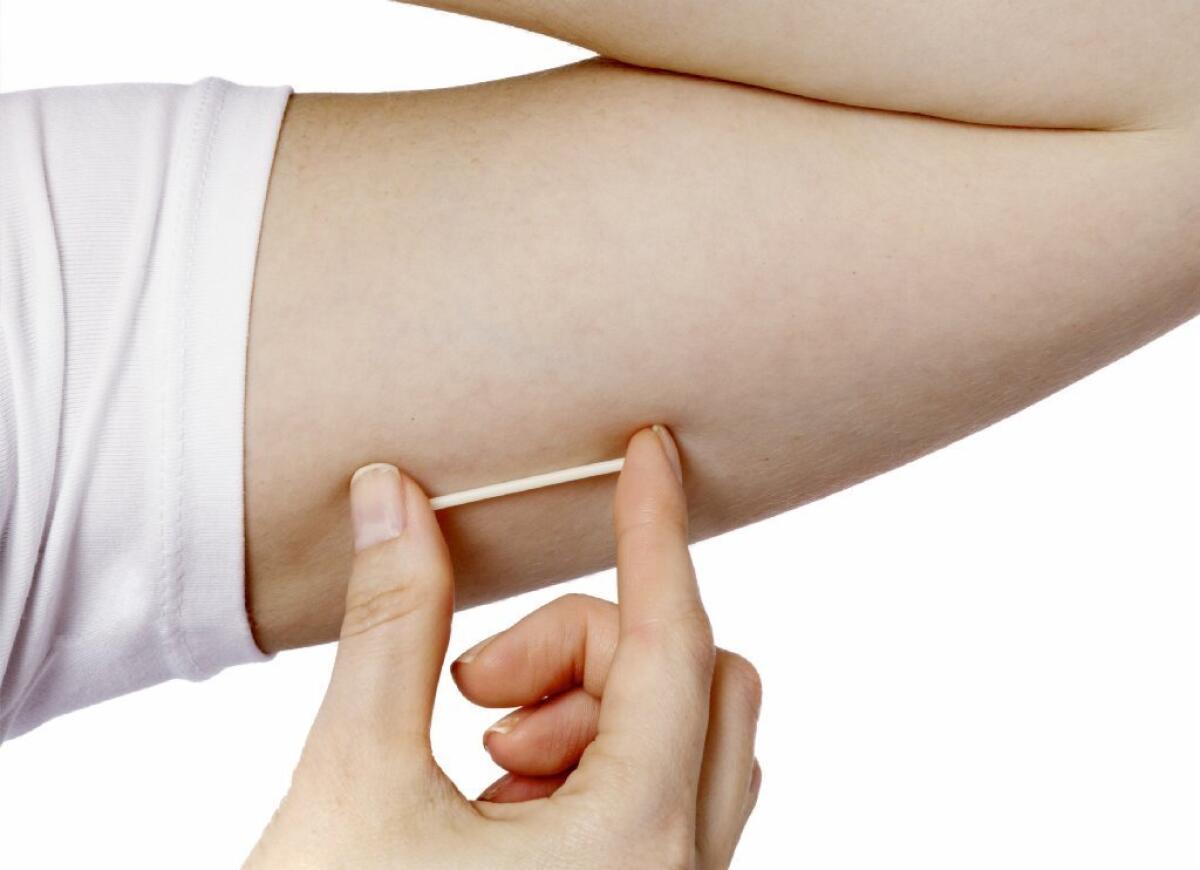Study: Good access to birth control prevents teen pregnancy, abortion

- Share via
Birth control prevents teenage pregnancies and abortions -- when teens know about it and are able to use it.
Of 560 young women deemed at high risk for pregnancy who were given free access to hormonal implants and copper IUDs as part of a study, not a single one became pregnant during the years they were tracked, according to a report that appears in Thursday’s edition of the New England Journal of Medicine.
Among all 1,404 teens who took part in the Contraceptive CHOICE Project between 2008 and 2013, the average annual pregnancy rate was 34 per 1,000 teens. That was 41% lower than the pregnancy rate for all American teens, which was 57.4 per 1,000 in 2010.
Nearly all of the St. Louis-area teens who took part in CHOICE were sexually active (97% of them had already lost their virginity when they enrolled in the program, and 99% had done so by the end of their first year in the program). When compared only with American teens who were sexually experienced, the young women in the program looked even better -- their pregnancy rate was 79% lower than that of their counterparts, who had 158.5 pregnancies per 1,000 teens.
The results were similar for abortions and births, according to the journal report. The average annual abortion rate for CHOICE participants was 9.7 per 1,000, compared with 14.7 per 1,000 for all U.S. teens and 41.5 per 1,000 sexually active teens. In addition, the average annual birth rate for teens in CHOICE was 19.4 per 1,000, compared with 34.4 per 1,000 American teens and 94 per 1,000 sexually active teens.
The Contraceptive CHOICE Program was launched by researchers at Washington University in St. Louis to see whether unintended pregnancies could be reduced by removing three common barriers to birth control -- lack of accurate information, lack of access to effective birth control and lack of funds to pay for it. The study enrolled 9,256 women between the ages of 14 and 45. Most of the minors in the study got their parents’ permission to participate, though four got waivers to enroll without parental consent.
All of the study participants were seeking contraception before they enrolled in CHOICE, and none of them intended to get pregnant for at least a year. Counselors in the program laid out various options for birth control -- from most effective to least effective -- and let the women decide which method was best for them. If their choice was medically appropriate, it was provided free of charge.
The New England Journal of Medicine study focused on data from 716 teens who were tracked for three years and 688 teens who were tracked for two years. Before joining the study, 48% of these teens had experienced an unplanned pregnancy, 25% had given birth and 18% had had an abortion.
After learning about various contraception options, 35% chose the hormone implant, making it the most popular choice. Coming in a close second (at 32%) were intrauterine devices that release the hormone levonorgestrel, followed by birth control pills (13%) and hormone injections that last for three months (9%). Copper IUDs were picked by 5% of women, as were vaginal rings. Rounding out the list was the transdermal patch, the choice of 2% of teens.
The most effective choices turned out to be the hormone implant and the copper IUD, both of which had perfect records over a combined 690.6 teen-years of use. As for the others:
The hormone-releasing IUD had 5.1 failures per 1,000 teen-years of use;
The hormone injections resulted in 5.2 failures per 1,000 teen-years of use;
The contraceptive ring produced 51.8 failures per 1,000 teen-years of use;
Birth control pills resulted in 56.8 failures per 1,000 teen-years of use; and
The transdermal patch had 60.8 failures per 1,000 teen-years of use.
The key to the CHOICE program’s success was that more than 70% of the teens were persuaded to pick a long-acting form of birth control, the study authors noted. Earlier this week, the American Academy of Pediatrics issued a policy statement endorsing teens’ use of hormone implants and IUDs, which can remain in place for up to 10 years.
Though teen pregnancy rates have been falling in the United States since the 1990s, they are still far higher than those of other industrialized nations. About 625,000 American teens became pregnant in 2010, according to data from the Guttmacher Institute.
The National Campaign to Prevent Teen and Unplanned Pregnancy estimates that teen births cost the United States nearly $10 billion in 2010. Those costs included healthcare needs, public assistance through programs such as the Special Supplemental Nutrition Program for Women, Infants and Children, and lost income to mothers who drop out of school or are otherwise unable to reach their educational potential.
The Centers for Disease Control and Prevention has set a goal of reducing the teen birth rate to 30.3 per 1,000 teens by 2015. The teens enrolled in CHOICE are already 36% below that goal, the study authors note.
For more medical news, follow me on Twitter @LATkarenkaplan and “like” Los Angeles Times Science & Health on Facebook.







